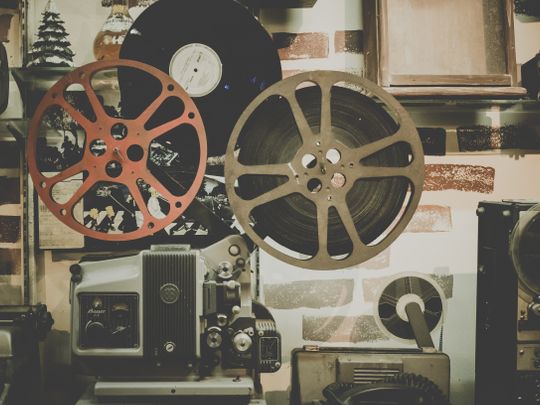
Perish the pandemic, a visitation from hell that spent its sinister time with us.
True, it was a time when no one life, no one institution, no one endeavour was left unscathed, when the quotidian workings of our global village were effectively shut down for what seemed like forever and a day. But it was also a time, on the margins of our tragedy, when filmic art disappeared from the big screen and cineastes endured withdrawal symptoms and broken hearts.
Men allegedly don’t — or are not meant to — cry. But last week I, an unabashed cineaste from head to toe, was close to tears when I found myself inside a cinema for the first time in close to two years. For a movie buff to have been denied access to the magic of the big screen for that long, that is, denied the magic of being inside a darkened movie theatre, with a group of strangers who together shared a sense of communal energy, the experience was sensual to the extreme.
It doesn’t matter whether, inside that theatre, we’re being transplanted, say, to the eerie expanse of the Wadi Rum desert, to keep company with the Arab prince Serif Ali and the British agent T.E. Lawrence in Lawrence of Arabia (1962), or to the cramped confines of George and Martha’s living room in Who Is Afraid of Virginia Woolf?, what engages us on the big screen, in that darkened, encapsulated space inside that theatre, is a reality more nuanced, more enriching, more subtle than that in the objective world outside.
There are more people walking the earth today than we care to admit who believe that the art of film is mere entertainment, who believe that movie theatres are archaic institutions, a vestigial remnant of a bygone era, and who watch movies — languidly reclining on their couches, with bare feet, in their pyjamas — streamed on their iPhones or television screens.
Serious art form
These folks, I say, are guilty of criminal acts and should be brought to justice at once before they do any more harm to society.
Yes, film is a serious art form, given the fact that the role it has played in our culture all these years made it imperative for campuses everywhere to have it established as a subject in the study of the contemporary philosophy of art, an art form on a par with more traditional art forms.
Indeed, countless tomes have already been written on the philosophical underpinnings of black and white film noir movies, say, for example, Double Indemnity (1944) and Body Heat (1953), along with many others, that explore dark themes such as moral ambiguity, social decay and existential malaise, with their anti-heroes often being drifters with no name and no past, Like Edward G. Robinson, Humphry Bogart and Robert Mitcham, driven by pure desire to commit a crime, often murder, by the seductive wiles and sex appeal of scheming femmes fatal, like Barbra Stanwick, Rita Hayworth and Gloria Grahame.
But filmic art is not just a serious art form. It is also the most successful in popular culture and the most prevalent in any society anywhere in the world today. Consider this as a case in point. In India alone, in 2018, the film industry catered to no less than 25 million moviegoers a week. And per capita cinema house admissions in other countries are no less profuse, attesting to the medium’s ubiquity.
The magic of watching cinematic art on the big screen (you won’t read the profane term “streaming” in this column ever again) is that it speaks to us, if only subliminally, of mind-blowing ideas about the lengths we go to in order to gain freedom, say, in Gilo Pontecorvo’s The Battle of Algiers (1966) and of how the mind-bending visuals in Stanley Kubrik’s 2001: A Space Odyssey (1968) can take us to a world where the vastness of cosmic space and our own puny inner being come together.
We are the stuff of which movies are made. We relate to movies because each one of our lives is a movie unto itself, a movie that has, as they say, a beginning, a middle and an end. Movies simply amplify our word and turn it into a world.
In the lyrics for his song, American Prayer, the tormented singer and songwriter Jim Morrison (d. 1971, at age 28) asks us “Is everybody in, is everybody in, is everybody in/ ... the ceremony is about to begin/ ... you’ve seen your birth, your life, your death/ ... [but] did you have a good world when you died/ ... / enough to have a movie on?”
The last two years gave us a glimpse of a dystopian world shorn of movie theatres and big screens. I’m happy to report that movies are reeling again, whether in a ritzy multiplex or in an ageing but cosy hole-in-the-wall art-house movie theatre — where they belong.
That’s where tough cineastes go when the going gets tough, where they go to be at peace with themselves and the world. But, darn it, when is someone going to do something about that overpriced popcorn we buy there?
— Fawaz Turki is a journalist, academic and author based in Washington. He is the author of The Disinherited: Journal of a Palestinian Exile








